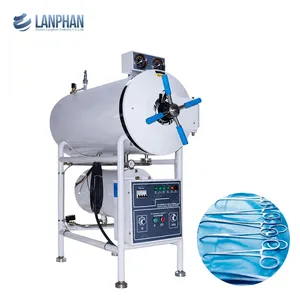Introduction to Autoclave Steam Sterilizer
The autoclave steam sterilizer is a vital instrument in medical, laboratory, and research environments, designed to eliminate harmful microorganisms, spores, and pathogens through the use of high-pressure steam. By employing the principles of steam under pressure, this device ensures that instruments, glassware, and other materials are not only sanitized but are also safe for public and personal health. Effectively utilized in hospitals, clinics, and laboratories, autoclaves play a crucial role in infection control and are a standard requirement for any facility that seeks to ensure a sterile environment.
Types of Autoclave Steam Sterilizer
Autoclave steam sterilizers come in various configurations suitable for different applications. Here’s a breakdown of the predominant types:
- Gravity Displacement Autoclaves: These are the most commonly used autoclaves, relying on gravity to remove air and allow steam to penetrate items.
- Vacuum Autoclaves: These employ vacuum technology to remove air from the chamber more efficiently, ensuring enhanced steam penetration and sterilization of porous materials.
- Steam Flush Pressure Pulse Autoclaves: These utilize repeated cycles of steam flushing and pressure pulses to ensure thorough sterilization of complex objects.
- Benchtop Autoclaves: Ideal for smaller facilities, these compact models fit easily on counters while still providing robust sterilization capabilities.
Applications of Autoclave Steam Sterilizer
The versatility of the autoclave steam sterilizer means it can be applied across a broad array of sectors:
- Healthcare: Essential in hospitals for sterilizing surgical instruments, glass syringes, and medical equipment.
- Laboratories: Used for sterilizing laboratory glassware, Petri dishes, and microbiological media.
- Dental Practices: Critical for ensuring that dental instruments are free from pathogens before use on patients.
- Pharmaceutical Industry: Employed to sterilize raw materials, tools, and other products that require aseptic conditions.
Features and Advantages of Autoclave Steam Sterilizer
The effective design of the autoclave steam sterilizer encompasses several key features that contribute to its efficiency and widespread use:
- High Pressure and Temperature: Capable of reaching temperatures of 121 to 134 degrees Celsius under pressure, effectively killing resistant organisms.
- Automated Cycles: Many models come with programmable cycles, allowing users to set and monitor sterilization processes effortlessly.
- Durable Construction: Typically made from stainless steel, which resists corrosion and extends the lifespan of the device.
- User-Friendly Interface: Most modern autoclaves feature LCD screens and easy-to-navigate controls to simplify operation and monitoring.
In addition to these features, the advantages include enhanced safety, significant time savings in the sterilization process, and the ability to efficiently sterilize various types of materials.









































































































































































































